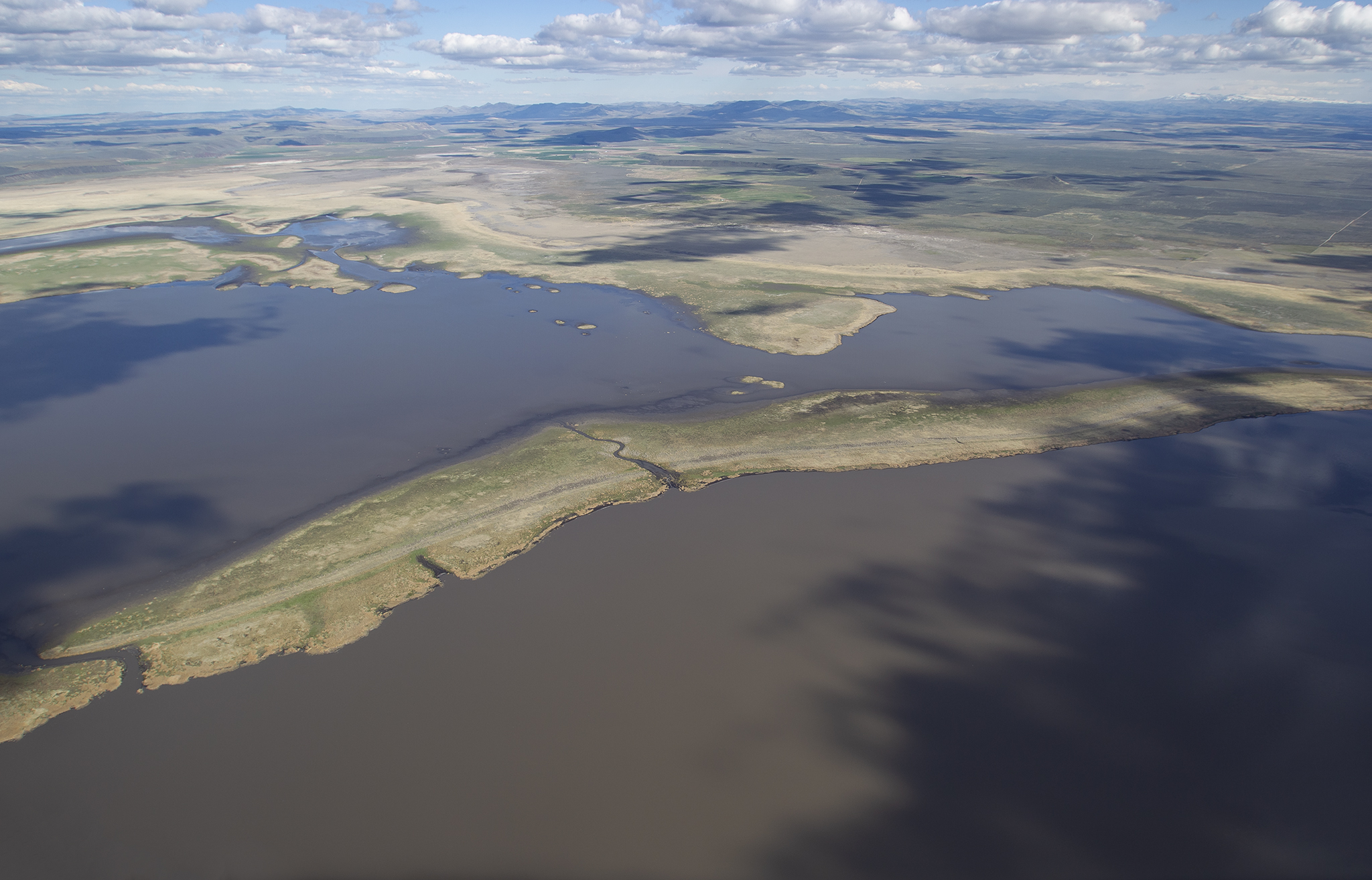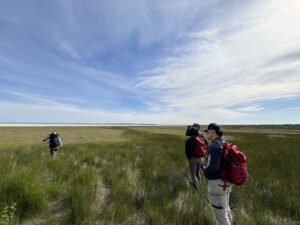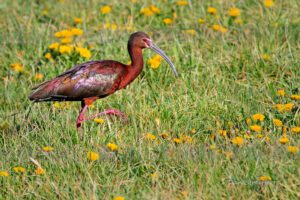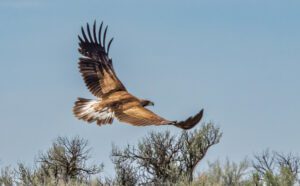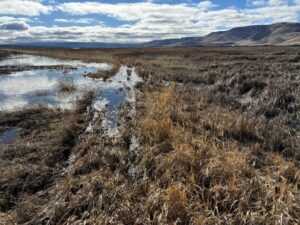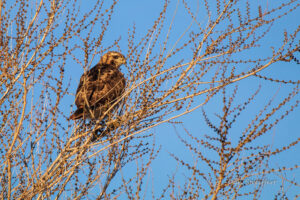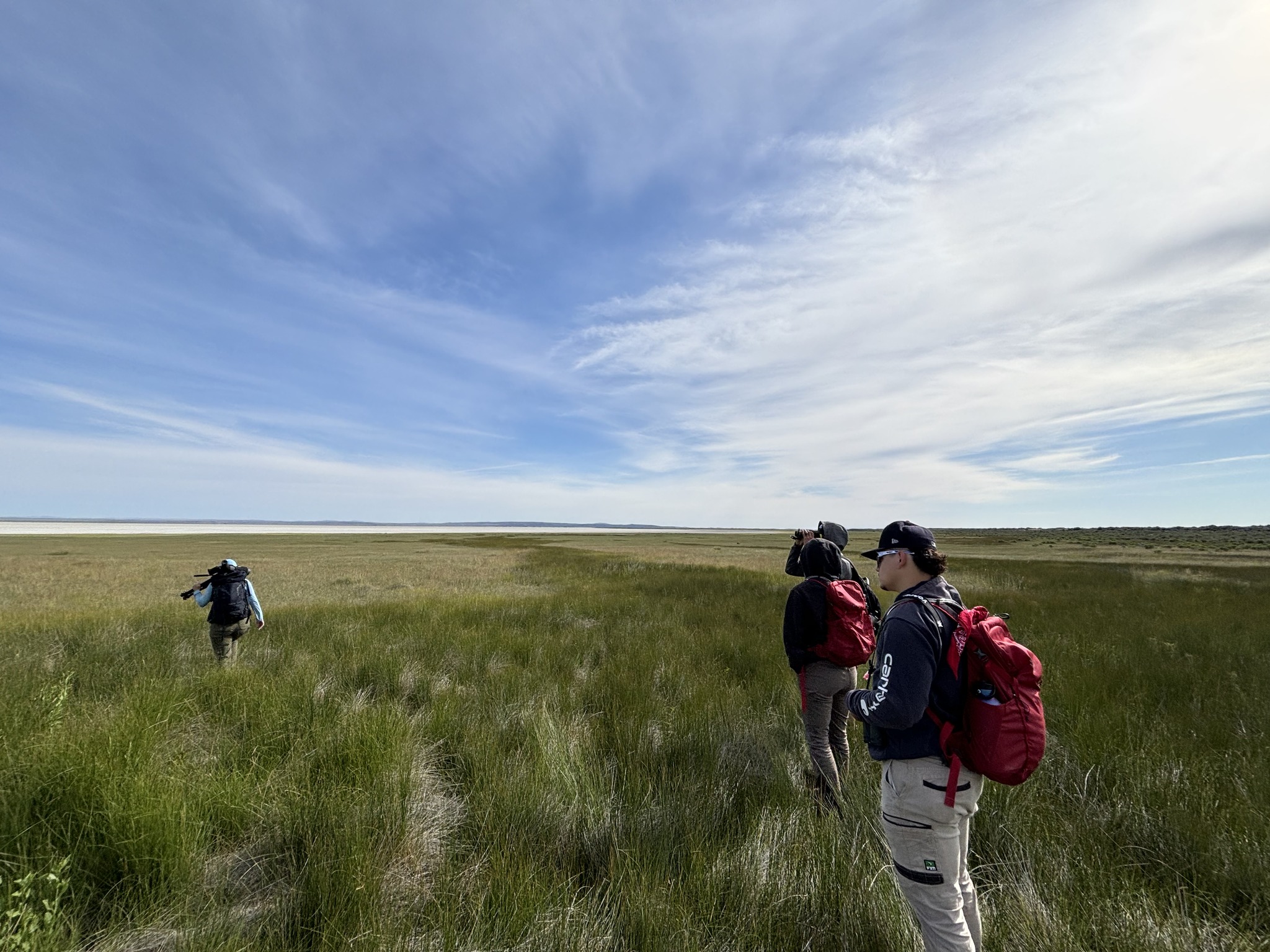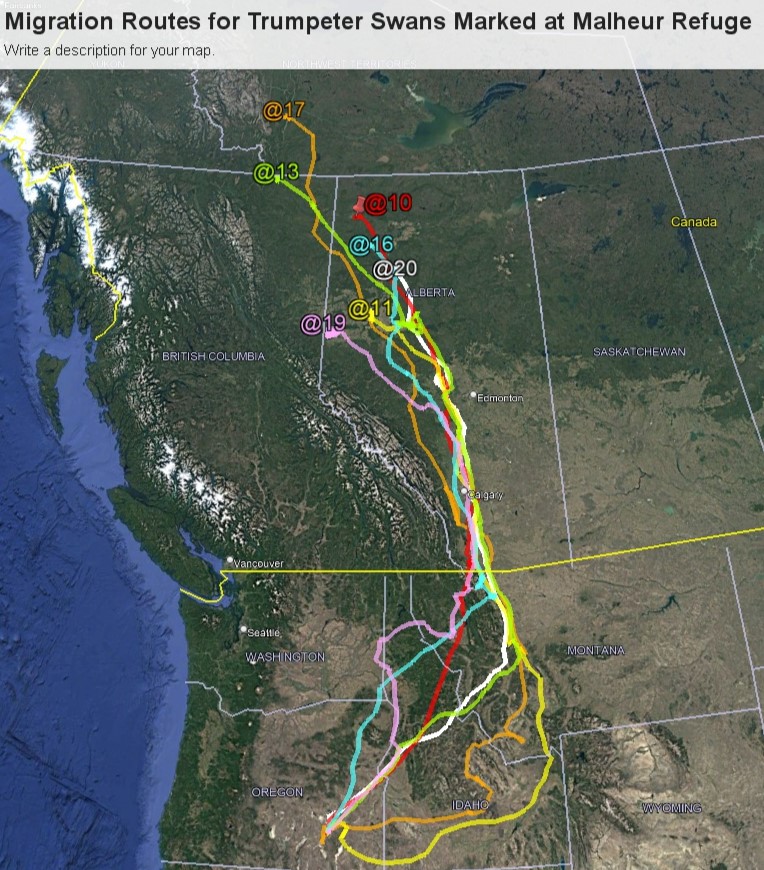Written by James Pearson, Malheur National Wildlife Refuge Fish Biologist/Aerial photo of Malheur Lake by Peter Pearsall
My name is James Pearson and I am the new Fish Biologist at the Malheur National Wildlife Refuge (MNWR). I was born and raised in Sacramento, California, where immediately after completion of high school I joined the U.S. Marines where I served for four years completing two deployments. After the Marines, I received my Undergraduate in Biology at Willamette University. Once finished with school I worked as a biological technician for multiple projects with ODFW, OSU, and USGS of which the projects mainly focused on the effects of forest practices on Adult and Juvenile Coho salmon (Onchorhynchus kisutch) in the Coastal Range of Oregon.
Next, I attended OSU where I began working towards my Master’s Degree in Dr. Dunham’s Lab with a thesis focused on constructing a population model for the invasive common carp (Cyprinus carpio; hereafter “carp”) in Malheur Lake and investigating the efficacy of different active and passive carp removal methods (i.e. commercial harvest, juvenile trapping, embryo electroshocking, and avian predation).
After the completion of my Master’s course work, I was offered an opportunity to pursue a PhD at OSU and continue my modeling work focused on Malheur Lake. My PhD dissertation is focused on constructing a systems model that incorporates carp, hydrology, and wind resuspension in Malheur Lake. The systems model when complete will enable us to better understand the efficacy of multiple alternative restoration scenarios and our ability to potentially promote ecosystem recovery in Malheur Lake.
The systems modeling described above is informed by multiple on the ground research projects which help decrease major model uncertainties, thus delivering more informed model predictions. One such project is the carp biomass experiment, which is currently being initiated by Dr. Doug Peterson (USFWS Abernathy Fish Technology Center; Vancouver, WA) and his USFWS crew in windmill pond on the MNWR. The carp biomass study is an important study because it aims to quantify the contribution of carp to the current degraded water quality conditions in Malheur Lake. For instance, Doug Peterson’s crew will be investigating how different levels of carp biomass will affect the water quality (nutrients, turbidity, and chlorophyll) in 22 enclosures, utilizing three treatment groups (carp biomass levels; 50, 100, 300 kg/ha) over a four month period (June- September; submerged aquatic vegetation growing season).
After the initial construction and implementation of the carp biomass project, employees of the MNWR and High Desert Partnership (HDP) will take over data collection for the extent of the experiment. HDP’s Aquatic Coordinator (Mark Chowning) will monitor the carp enclosures, utilizing PIT tag arrays to ensure that the carp are still present at the desired densities as well as conduct periodic carp sampling events to collect key biometric data. In addition, Norman Clippinger (USFWS) will be collecting monthly water quality data analysis in which he will be monitoring for nutrients, turbidity, and chlorophyll. At the end of this project, we hope to utilize the information obtained in the carp biomass experiment to aid modeling efforts and ultimately inform future restoration actions in Malheur Lake.

